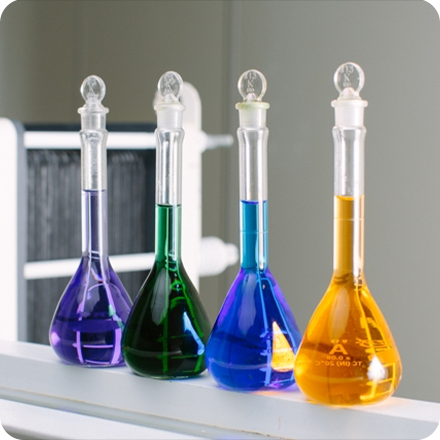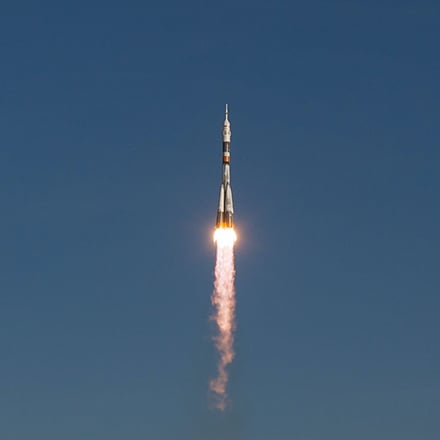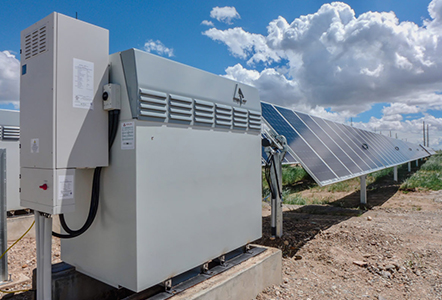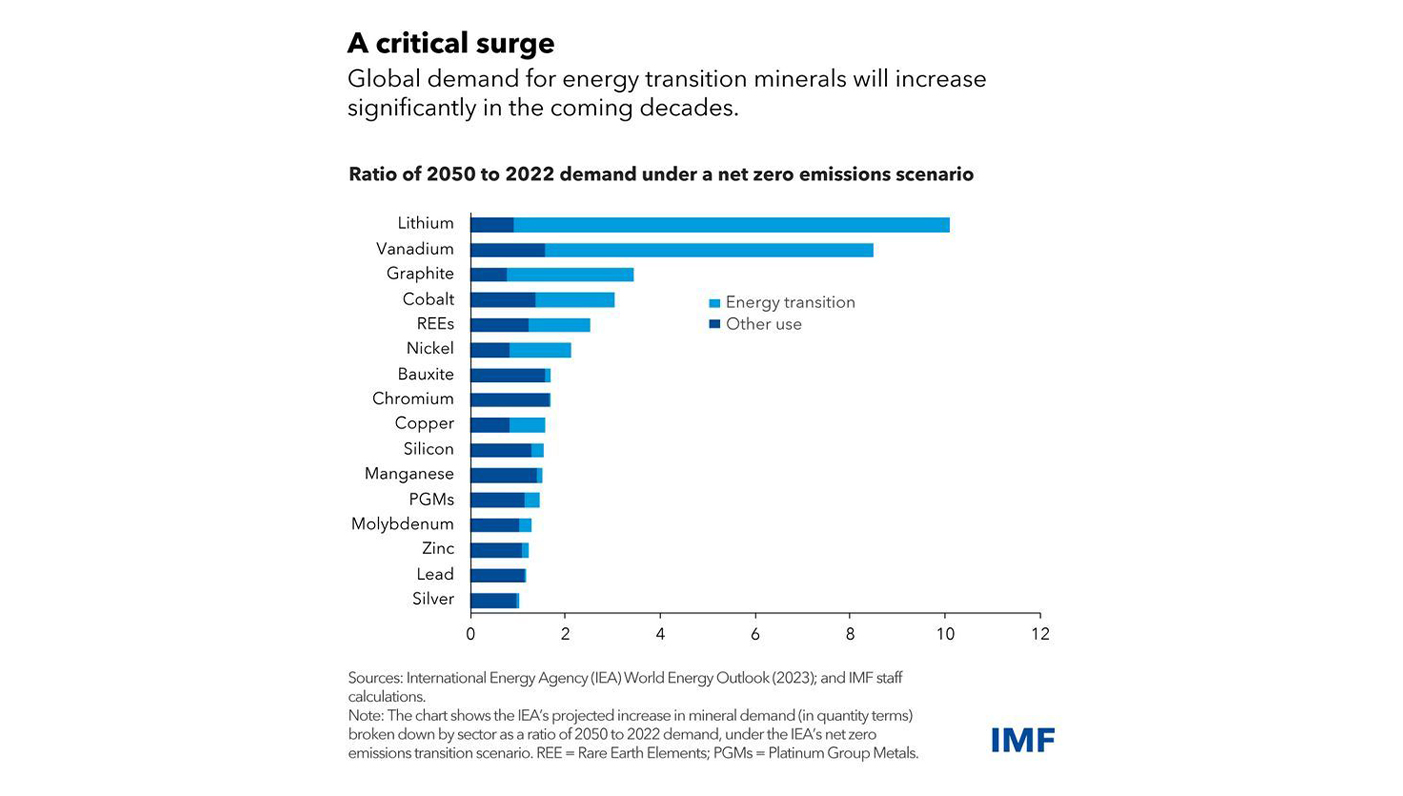Vanadium: The world’s most versatile metal
Explore the multifaceted uses and powerful potential of vanadium, a critical element in our modern world.
At QEM Limited, we recognise the strength and beauty of vanadium, the 23rd element on the periodic table. This ductile, silvery-grey transition metal is a workhorse in industries worldwide, notably used to create powerful steel alloys. Adding vanadium makes steel products stronger, lighter, and more efficient, making it a standout among critical minerals in today’s new energy economy.
Watch The OverviewVanadium is the world’s most versatile metal. Rarely found as a metal in isolation, it is found in over 60 minerals as a trace element in a variety of rock types, such as magnetite, bauxite, sandstone, coal, and notably in QEM’s case, oil shale. It is a hard, silvery metallic, ductile transition element, with an atomic number of 23.
As a chemical element, Vanadium has unique physical and chemical properties that make it distinct from every other known element. It has a high melting point of 1910 degrees, excellent weatherability and is malleable, properties that make it very useful in steel alloying.
Regarded as “the most beautiful metal of all”, vanadium is named after the Norse goddess of beauty, Vanadis, due to the beautiful coloured compounds it produces.
Vanadium is classed as a Critical Mineral by the Australian Government and many others around the world.
Vanadium is a new energy mineral and a ‘strategic metal’ when building a new energy economy. Used in vanadium redox flow batteries (VFB’s), vanadium is proven to be a safe, reliable and highly scalable solution for long duration energy storage.
As a critical mineral, Vanadium is listed for priority development and investment.


The story of vanadium is indeed one of transformation and versatility.
This dynamic element shapes the backbone of numerous industries, from construction to aerospace, from smart glass manufacturing to the making of tools and automotive components. Vanadium’s thermal stability and strength are prized in the aviation industry, forming the heart of jet engines and the soul of airframes. Its corrosion-resistant property is key to special tubes and pipes used in the chemical industry.
The lion’s share of vanadium is used in the steel industry, contributing to the strength and efficiency of everything from construction rebars to automotive components and rail steels.
Its role in mooring and anchor chains for ships and offshore platforms capitalises on its grain refining capability, offering increased strength and wear resistance.

90% of vanadium consumption today occurs in the steel industry, with the remaining 10% of vanadium supply being used in the production of titanium alloys, super alloys, chemical applications and energy storage applications, where quality requirements are typically more rigorous.
The properties of vanadium make it highly effective in strengthening metals and reducing corrosion.
The construction sector is the largest consumer of steel products, with approximately 87% of vanadium being used in steel. Vanadium micro-alloyed high-strength rebar is a safe, reliable and cost-effective solution for reinforced concrete construction, particularly in the world’s earthquake-prone regions.


In aviation and aerospace, vanadium’s strength and thermal stability is utilised in jet engines with vanadium foil being used in cladding titanium to steel to construct airframes.
In this sector, vanadium is irreplaceable as there is no acceptable substitute in aerospace titanium alloys. As with steel alloys used in construction, only small amounts are required in order to achieve the desired critical properties for safety and performance.
The essential tools and dies used to manufacture engineering components and everyday articles often contain vanadium for improved cutting-edge hardness and wear resistance.
Used in spanners, screwdrivers and other domestic and engineering tools, vanadium is added with chromium to increase strength and increase resistance to wear.


The addition of vanadium to rail steels can increase the tensile strength from about 700 N/mm2 to over 1,200 N/mm2, which thereby increases the wear and fatigue resistance of the rails.
Welded heavy chains, used for mooring ships and offshore platforms exploit the grain refining capability of vanadium, which provides increased strength and wear resistance.

Vanadium contributes to the strength and economic efficiency demanded in materials for automobiles and trucks. High-strength automotive suspension and valve springs benefit from vanadium additions as a result of improved sag resistance and the potential to reduce size and weight.
Smart glass windows manufactured with vanadium are capable of saving energy by preventing thermal radiation from escaping, and as a result, preventing heat loss during the winter, and by avoiding infrared radiation from the sun from entering the building during the summer.

Vanadium redox flow batteries (VRFBs) are the most efficient battery technology suitable for utility-scale renewable energy storage for both wind and solar. Characterised as being compact, fully containerised, non-flammable and reusable over semi-infinite cycles, with a very fast response time.


Chemical applications include; catalysts, dyes, phosphors, ceramic pigments and in producing superconducting magnets. The most important industrial vanadium metal, vanadium pentoxide, is used as a catalyst for the production of sulfuric acid.
According to statistics from Vanitec, the global not-for-profit vanadium industry organisation, energy storage became the second-largest consumer of vanadium in 2022 for the first time, surpassing chemicals & catalysts, and titanium alloys. Steel and HSLA continues to be the largest consumer of vanadium globally, however, this shift in the use of vanadium in long duration energy storage (LDES), highlights that the transition to a more sustainable and resilient energy future is well on its way.
The increased use of vanadium in energy storage is driven by increased consumption of vanadium in VRFBs – a proven and rapidly growing large-scale energy storage technology that can store large amounts of energy produced from renewable sources to provide on-demand, round-the-clock, carbon-free power. Though use in energy storage is small as a percentage of global vanadium consumption at 4.3%, its growth from 2021 to 2022 marks a 42% year-on-year increase 1. This growth reflects the recognition of the metal’s critical role in the energy storage market.
1 This is according to global vanadium consumption estimates for 2022, which have been consolidated by Vanitec.
2 In 2022, independent analysis by market intelligence and advisory firm, Guidehouse Insights, forecast that global annual VRFB deployments would reach approximately 32.8 GWh per annum by 2031. This represents an annual growth rate (CAGR) of 41% over the forecasted period.
Market expected to reach
In 2025 at CAGR of 10.2%
VRFB demand expected to equate
of vanadium market
by 2040 currently only ~4% (CRU-17 Nov 22)
Global production 2022
China, Russia, Brazil, South Africa, US
Australia holding
of undeveloped global reserves
BUT has no domestic production – YET!
Vanadiun listed as
in Aust, US, EU and Japan
Global vanadium demand
increase by 2050
5th highest growing market in critical minerals according to the World Bank – Minerals for Climate Action

